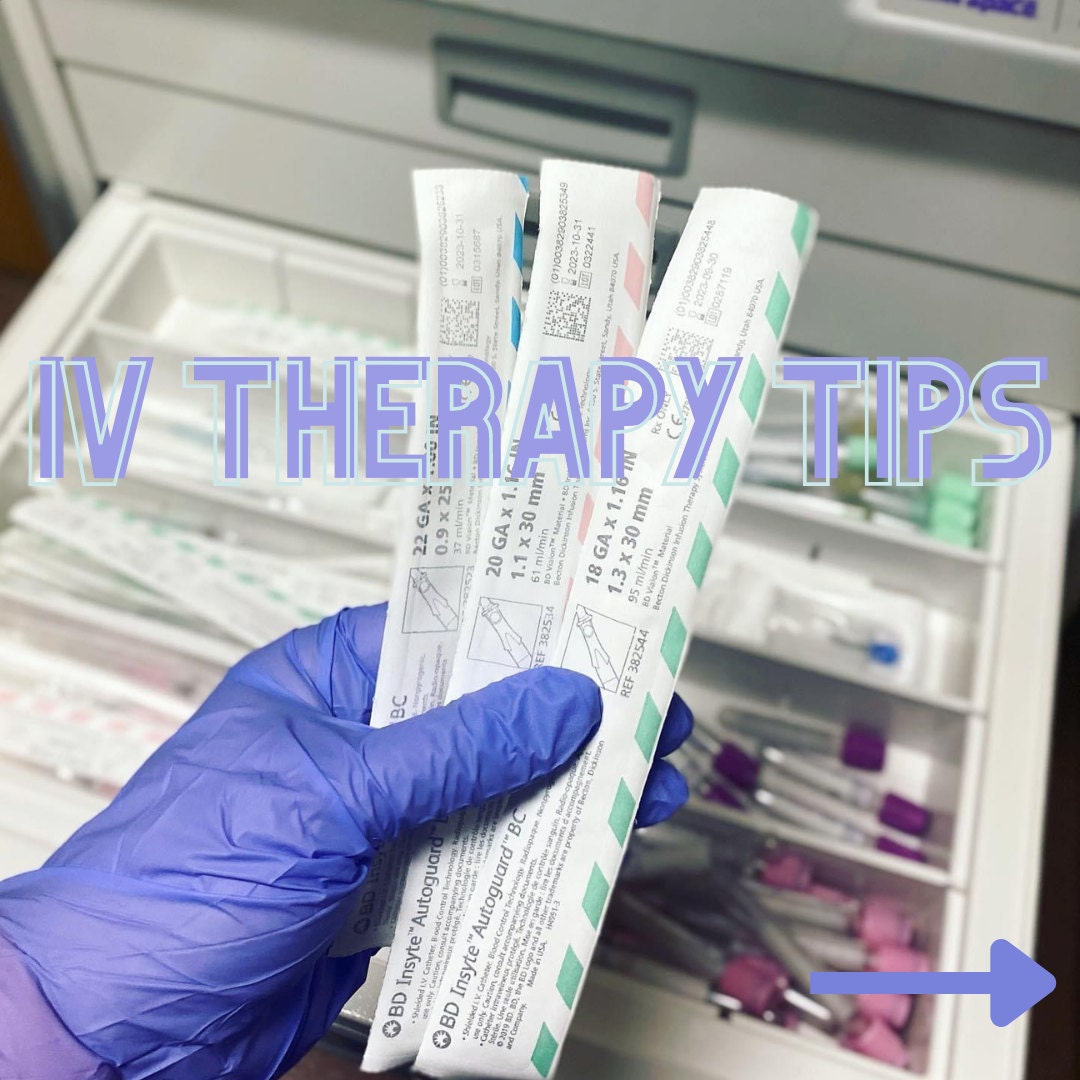IV Insertion Tips and Tricks
1️⃣ Always communicate to the patient what you are doing before you do it 💬 This will help ease their fears and show that you’re confident. For example when I put the tourniquet on their arm, I warn them that it may be a little tight and that I will take it off shortly. When I’m about to insert the needle, I usually let them know, then I make small talk to distract and it works like a charm .
2️⃣ Pick the right size cannula for the situation 💉 When I know a patient is likely to receive blood, I know I need a 20 gauge or bigger. If I know a patient will be receiving a caustic drug like IV potassium or vancomycin, I will place a smaller gauge needle to reduce pain and phlebitis at the insertion site.
3️⃣ Be picky about where you stick! 👍🏼 Unless it’s an emergency, you should really take your time to find a good vein. Palpate and drag your fingers across the forearm to find a vein more easily to avoid sticking the patient multiple times.
4️⃣ Position the patient’s arm in a dependent position ⬇️ This will help increase capillary refill and improve your ability to find a good vein.
5️⃣ Use heat to vasodilate 🔥 Even if I think a patient is going to have good veins, I like to bring a heat pack no matter what in case I don’t see any veins I like right away. If I don’t have a heat pack nearby, a glove with warm water in it also works really well!
6️⃣ Start with the lower veins first, then work your way upward. 💉 If you blow a proximal vein, you then can’t use any sites below it which limits your options.
7️⃣ Avoid the accessory cephalic vein (AC) if possible 💪🏼 The AC or the inside of the elbow joint can be one of the more difficult spots for a patient to have an IV. This is because every time the patient bends their arm, their infusion will stop and the pump will beep due to a down flow obstruction. This is very uncomfortable for the patient, and reduces their mobility in that arm.
8️⃣ Stabilize the vein before insertion 👇🏻 Veins roll, especially in more frail/elderly patients, this is why it’s important to stabilize the vein by pulling the skin taught (below the needle so you don’t accidentally stick yourself)
9️⃣ Insert the IV at a low angle ⬇️ Inserting an IV at a 15-30° angle is best to avoid inserting the needle through the vein and blowing it.
🔟 Once the IV is inserted and working, be sure to secure it well! There is nothing worse then getting a hard stick on a patient, then two hours later they’ve pulled it out because they rolled over in bed. I always use tegaderm, tape, and even ace wrap if I think a patient might accidentally pull out their IV. Geri sleeves are also great for confused patients who like to pick at everything.

